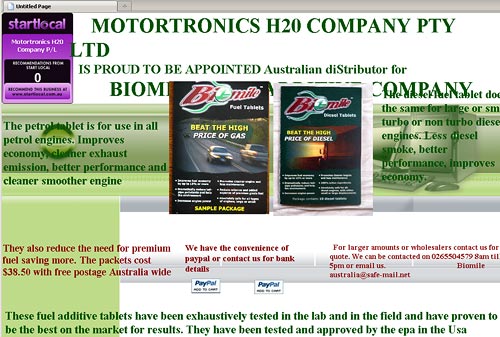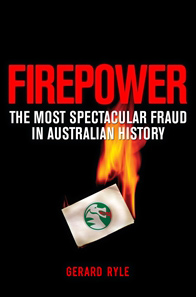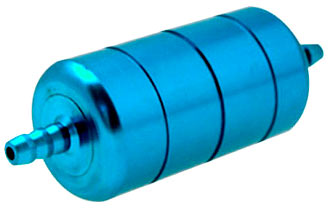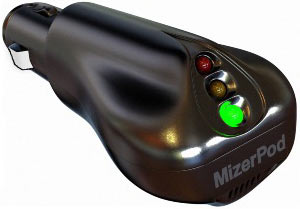Another of you annoying readers writes:
Dan, I would love to hear your thoughts on the merits of the "Vapor Fuel Technologies" fuel-saving tech discussed here.
I think of EETimes as a fairly reputable website, but discussion of fuel-saving gadgets seem a bit out of EETimes' area of expertise. In the article, no claim is made regarding burning fuel more completely; it seems the claim is that since combustion event occurs over a shorter period of time, that this somehow more efficient. Still, something about the claim of 30 percent better mileage just strikes me as unlikely.
Strange that the Vapor Fuel Technologies website mentions independent tests by some group called California Environmental Engineering (CEE), but they do not actually provide any formal documentation of the test procedure and results.
Matt
Yep, here we go again.
But this time I found a rabbit-hole that went a lot further than I thought it would.
The Vapor Fuel Techologies (yes, I know...) site raised its first red flag when it proudly mentioned that the company has some patents, as if that has something to do with the usefulness of the thing patented. (All a patent actually means is that the Patent Office doesn't think your idea is excessively similar to someone else's - and modern overworked Patent Offices don't even manage to do that very well. They don't check, and never have checked, to see whether a patented thing actually works, unless it's very obviously a perpetual-motion machine.)
OK, so off we go to the "Product" page to find what this awesome patented thing is meant to be, and we discover that VFT are making pretty claims not very different from those made for various fuel vaporisation, or atomisation, gadgets.
Their central claim is a bit different, though. They say that heating the air that's heading to the combustion chamber causes it to expand, so that less fuel-air mixture goes into the cylinder, and you use less fuel.
Well, OK, that may be true if you can get your engine-management computer to cope with it, but the fuel-injection system in a modern car is perfectly capable of doing the same thing all by itself, whenever you're asking for less than full power. Putting a ceiling value on the mass of air that can go in to the cylinder will, at best, just give you a car that now uses less fuel at wide open throttle (WOT), because you've reduced the "wideness" of that throttle. Now, when you put your foot to the floor, it has the same effect that putting your foot four-fifths of the way to the floor did before. A similar effect occurs when you drive on a hot day; the air is less dense and the maximum power your engine can make is, therefore, slightly lower than it'd be on a cold day.
This does not strike me as something worth paying money for. Just let your air cleaner get filthy and it'll do the same thing for free.
(Note, now that I think of it, that there's no connection I can see between Vapor Fuel Technologies and Smokey Yunick's famous-in-certain-circles "Hot Vapor" engine.)
Also from the Product page: "...improves the combustion process by increasing flame speed and creating the conditions for a chain reaction Autoignition."
My initial reaction to that was "why the hell would you want that to happen!?", because there is no reason to actually want fuel to "autoignite" in a petrol engine. If you do manage to substantially accelerate combustion, by for instance using low-octane fuel in a high-compression engine, your engine may indeed suffer from "autoignition", also known as "knock" or "detonation". That's how diesel engines work, but it's very bad for petrol engines.
Fuel burn time in petrol engines is a compromise, as explained in detail by Tony of the eponymous Guide to Fuel Saving Gadgets on his page about turbulence gadgets. There's no reason to suppose that it's just generally good to burn the fuel faster.
Elsewhere on the Vapor Fuel site they mention that the orthodox automotive industry is exploring "HCCI and Autoignition". This is true; HCCI is "homogeneous charge compression ignition" and "autoignition", in this case, means controlled autoignition, happening when you want it to and not all willy-nilly, possibly before the piston's made it to top-dead-centre.
The idea here is to make engines with diesel-like ignition and fuel economy, but conventional-spark-ignition-like emissions (instead of the characteristic "diesel smoke" that's led to some diesel cars now carrying around a little tank full of "urea-based reductant", thus instantly spawning a million jokes from people who also make jokes whenever they see the word "methane").
The idea that you can make a normal spark-ignition engine into one of these new advanced pseudo-diesel designs by just bolting on an air heater strikes me as puerile.
It doesn't matter what I think of it, of course. You can't argue with success; if it works, it works.
But the only evidence that it does work, so far as Matt and I can see, is that single test, there on the "Independent test results" page.
This, it turns out, is where the real fun is to be found.
First, that page has an odd side-swipe at "the gasoline HCCI and Autoignition efforts currently underway by others"; those engines, the test-results page says in as many words, would find it "difficult, if not impossible", to just do an EPA highway cycle test.
I presume what they meant to say was that their competitors would have difficulty achieving their claimed mileage improvement in an EPA test, but this sort of lack of attention to detail may be in some way related to the fact that the Vapor Fuel Technologies EPA test is stated as having happened almost two years ago now, and yet... still no sign of anybody else taking advantage of this amazing 30% MPG improvement. Or even a replication of the test.
Oh, but wait a minute - where was it that this test apparently took place, again?
At "California Environmental Engineering ... an EPA recognized and California Air Resources Board (CARB) certified independent test laboratory".
That name rings a bell.
That's right, regular readers - that's the same lab that said the Moletech Fuel Saver works!
California Environmental Engineering were mentioned in that mysterious disappearing Herald piece about the Moletech gizmo, and I noticed then that CEE seemed to be a bit keen on the old fuel-saving miracle products.
But I very severely underestimated how many of these talismans and potions they've tested, invariably with positive results.
On top of the marvellous yet mysterious Moletech molecular modifier, CEE are also said to have given their stamp of approval to "Microlon" (PDF), and something called the "CHr Fuel Improvement Device" (PDF), and this (PDF) hydrogen-injection thing, and this other "HHO" gadget, and the Nanotech Fuel Corporation "Emissions Reducing Reformulator" (PDF), and the "Rentar Fuel Catalyst", and the "Fuelstar fuel combustion catalyst", and the "Green Plus (liquid!) fuel catalyst", and the "Omstar D-1280X fuel conditioner", and some other "Fuel Saver" back in 2003, and the Advanced Fuel Technologies carburetor for two-strokes back in 2000, and the "Hydro-Cell Emissions Reducer" (PDF), and the Hiclone turbulence device, and the CHEC HFI Hydrogen Fuel Injection system (PDF), and some HyPower product or other (I'm not sure which, because the PDF links on HyPower's Test Results page are broken), and this "Brown's Gas" doodad, and the SV Technology "DynoValve" crankcase-ventilation thingy, and the Petrol.Net Fuel Additive (though this time CEE's test is, amusingly, mentioned on the testimonials page...), and the Hy-Drive On-Board Electrolyzer. And it goes on, and on, and on...
And yet, not a one of 'em's being fitted to, poured into or waved over cars on the production line yet, bringing hundreds of millions, if not billions, of dollars per year to their brilliant inventors. All are still being sold over the counter to individual motorists, or being offered as this year's sure-fire investment opportunity.
People who design engines strike a balance between power, economy and driveability. An engine that lets a family car deliver 75 miles per gallon, but has power and torque curves that look like different areas of the Swiss Alps, is no use for normal automobiles.
Car companies have been tuning, balancing and refining their products for more than a hundred years. And racing engine designers have pushed pretty much every oddball modification to its screaming limits. But now we're expected to believe that Vapor Fuel Technologies have just, for the very first time, thought of deliberately heating the intake charge - you know, like a non-intercooled turbocharger, except without the boost - and discovered that doing that is good for what ails you.
And to support their claim, they show us a report from a "laboratory" that apparently never met a mileage improver it didn't like.
Pull the other one.



